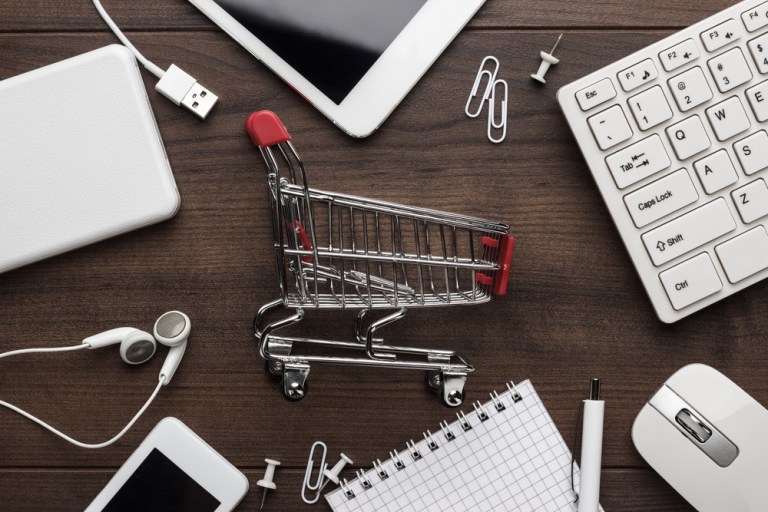
Checking out is the tricky part of commerce, whether it be retailing or eTailing. Both the consumer and the business owner want checkout to be seamless and frictionless, so what could be more frictionless than eliminating the checkout altogether? Moin Moinuddin, head of product for integrated payments at Vantiv, explains why point of entry should replace point of sale.
There was once a time when the butcher in town knew you by name, because that’s where you would always buy your meat, and the baker would have your two fresh-baked rye loaves, still hot, sitting on the counter ready for you to pick up on a Monday morning, because that’s where you always bought your bread. ETailers have a leg-up on retailers because they are recreating the shopping experiences of old.
The beauty of that time was the personalization of the shopping experience; the staff at the store calling you by name, and the shop owner’s intent on ensuring your satisfaction before you left the store.
These are the shopping experiences that were valued and driven by the purveyor-consumer relationship. But these are also the experiences lost over the last 30 years, according to Moin Moinuddin, Head of Product for Integrated Payments at Vantiv. And although this retail model as we knew it has largely disappeared, it is the eTailers and not the retailers who have, to some extent, brought it back, and at scale, through technology.
eTailer Vs. Retailer
ETailers have re-established the customer-purveyor relationship, in some way, but it still has a long way to go. Amazon’s personalization is impressive; the site keeps track of a consumer’s buying history, subscriptions can be initiated for repeat orders and wish lists keep track of items that the consumer might choose to buy later.
The retailer, however, cannot establish such a relationship, because the systems and technology in the physical retail space are not there — yet.
“The online environment gives eTailers an advantage because technology provides customer intimacy. For retailers, general merchandizing has become so huge that the customer touch is lost because of the size of the store and huge turnover of employees.”
“You won’t see the same clerk every day anymore,” says Moinuddin. But coming to the retailer’s rescue is consumers’ addiction to and reliance on mobile phones, which Moinuddin explains like so: “We might realize at the end of the day that we forgot our wallets, but we realize that we’ve forgotten our phone as soon as we walk out the door.”
This ubiquity of mobile phones has encouraged retailers to invest in technology, such as beacons and Bluetooth, which can send notifications to shoppers in-store.
Retailers are also investing in the data side — collecting and analyzing data and then using it to provide custom experiences based on customer profiles.
A lack of engagement by consumers is telling retailers that they are losing customers to the online experience, and they need to provide a more personalized and customized experience in order to compete.
“Unless retailers transform, they are going to be history,” says Moinuddin.
From POS To POE
Changing POS technology is a massive undertaking for any retailer in terms of the cost and retraining staff, but one big change is the use of location-based, opt-in technology that helps retailers to get to know the customer and respond to the consumers’ needs as soon as they walk in the store.
According to Moinuddin: “A big change is connection with the cloud. Wi-Fi and connectivity are making POS not simply a disconnected, dumb terminal but more like a connected ePoint where customer interaction happens.”
By scanning a loyalty card or with phone proximity technology, the POS knows who the consumer is, their buying history and what offers to push to that consumer, but it may be too late by then.
“The point is to move away from point of sales to point of entry. One goal is for retailers to be able to send offers to the consumer that fit their wish list as soon as they walk in the store and to guide them to where they need to be,” says Moinuddin.
User identification technology and beacons, which are small wireless devices located in aisles that connect to other devices via Bluetooth signal, can push notifications to consumers as they walk by. They can also help retailers gather data for the retailer. Retailers can leverage the data and also use this technology to rearrange their stores according to traffic flow and to encourage more visitors to the store.
So far, the effectiveness of this technology is not certain, and there is still a long road to travel. According to Moinuddin, citing Forrester: “Only 3 percent of retailers have deployed this technology and are still experimenting, and about 16 percent want to do something. But the uptick is pretty low, and the business case for the beacon is still to be proven.”
Check The Checkout
Uber has perfected the frictionless checkout by eliminating it completely; Uber riders get out of the car and they’re done — the payment transaction is all done in the background. Can this model be applied to retail stores, where the consumer perhaps has a running amount showing on the cart and can walk out any time with the payment taken care of by the card on file?
Moinuddin thinks so. It’s just a matter of integrating the right technologies and collecting the right data so that POS can become POE.
“Retailers have an enormous amount of data that is underutilized. They should use that and technologies, such as machine learning, to provide a more personalized and customized experience for consumers. Because whoever tackles that can definitely transform retail in the next five to 10 years.”